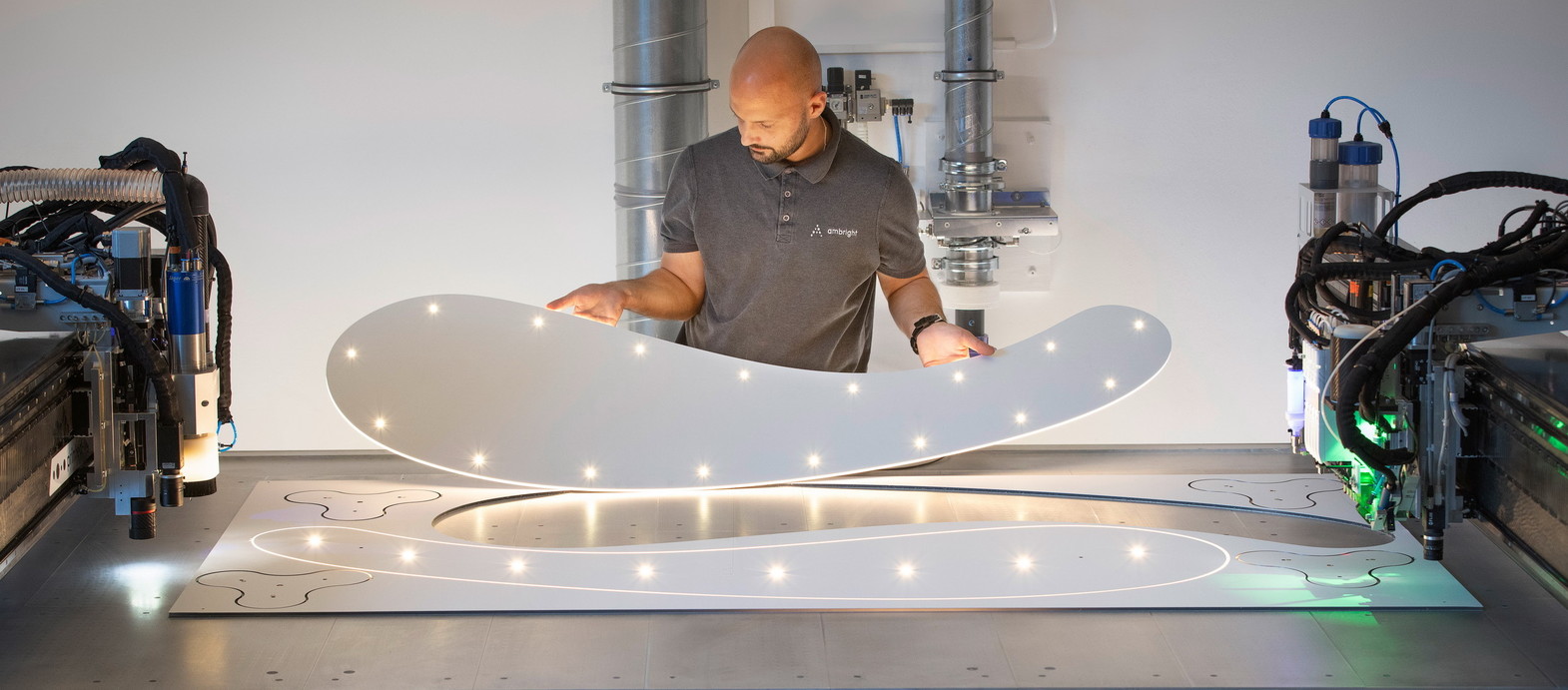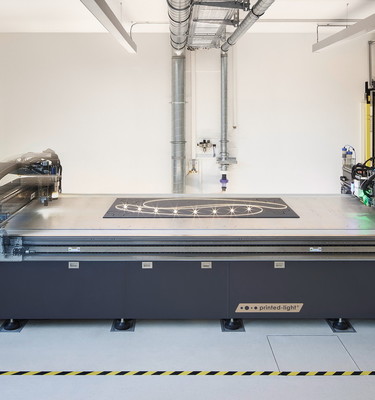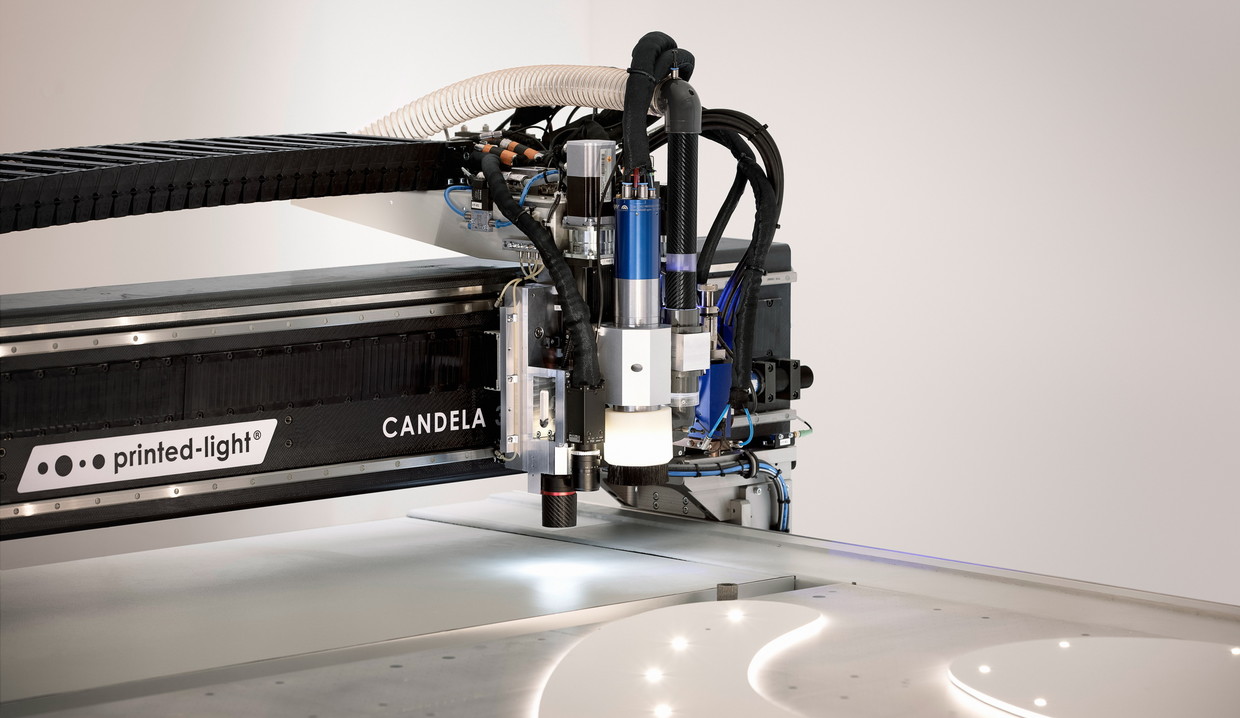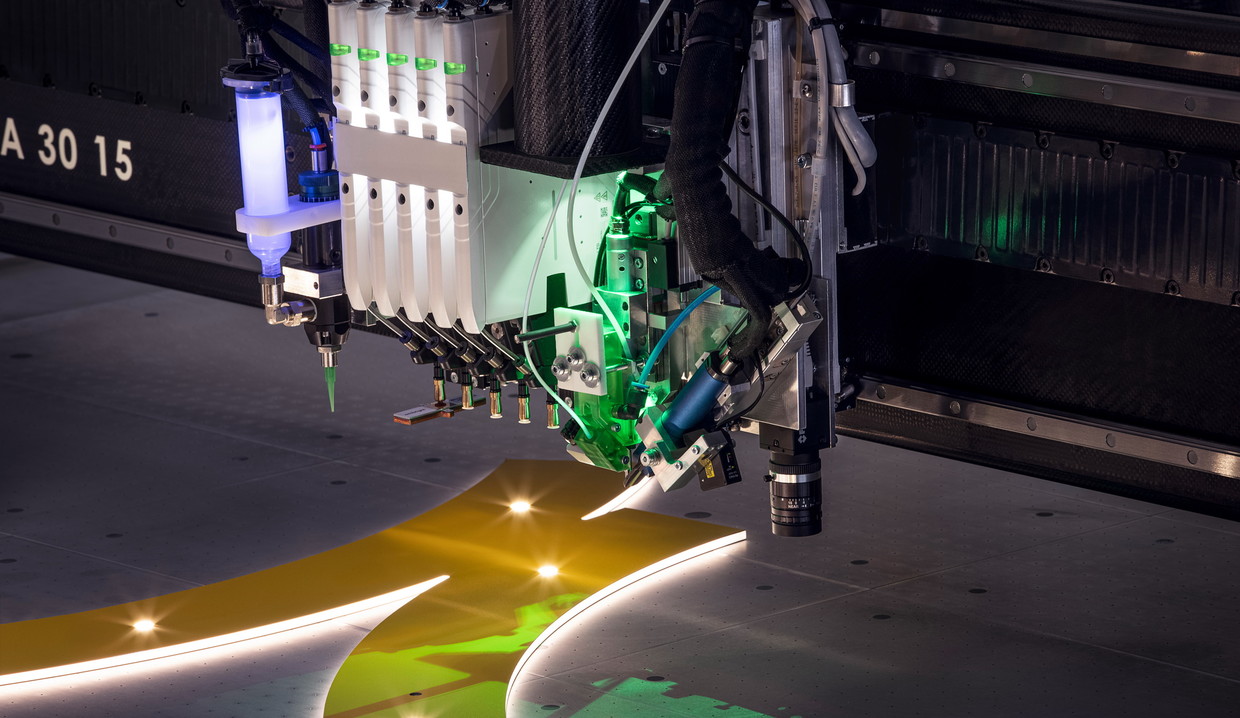Gutenberg invented printing letters - we invented printing light!
Light, independent of standardized products and tailored to our customers requirements. Light, individualizable, free in form and material and with fascinating effect. Since 2015, we have been working on turning our vision into reality. The result? A radical new understanding of light: Unique. Digital. Scalable.
Freedom of Design
Light motives or luminaires can be designed and produced according to your own design. No other solution on the market allows this degree of individualization.
Lighting Quality
With a high brilliance, the small light spots outshine all expectations. Luminosity and light color can be selected individually.
Digitization
For the first time in the lighting industry the patented light printing fully exploits the advantages of Industry 4.0. We combine a maximum of individualization and cost efficiency.
Material Colors
The light dots can be printed on plastics, veneers, paper, CPL/HPL plates or refined metals of thicknesses from 0.8 to 6 mm. The added height including wiring is extremely low at 0.6 mm.
Scalable Size
With areas up to 7 m² we also realize large-format products for great spatial effects. Even larger areas can be assembled by multiple pieces.
Your passion is designing products and we listened
With printed-light, we give you a powerful tool that allows you to design with light like never done before. We believe in individual, tailor-made products. Take the design into your own hands - according to your requirements and wishes in terms of shape, light and effect. It is your product and your luminaire - as individual as your signature.
core competencies
Where previous solutions based on printed circuit boards are at an end, our light printing is beginning to show its advantages. A production format of 2x3 meters in one piece and almost any application size by tiling allows impressive installations.
Our light printing can be used for decorative applications as well as for tasks such as room or object lighting. We will be glad to coordinate the design suitable for your application individually with you.
When it comes to the surface finish for your product, you choose from our wide portfolio. We see ourselves as a technology provider and innovator, and we also make previously unsolved problems possible for you.
Our light printing is holistically digital and future-oriented. We can therefore offer you the advantages of Industry 4.0: Flexible production processes, efficiency at low quantities and high individualisation – Light 4.0.
Our light printing is essentially based on the automated integration of light points into the most diverse surfaces. There are no limits to your creativity when it comes to form finding and design.

How does printed-light work?
The core idea of the process is the automated integration of individual LEDs according to your ideas. Depending on the application, we print light sources and other electronic components on different substrate materials and create your individualized product. You make the design, then our robotics takes over the individual work steps.
- sketch
- shine
1. sketch
Digital design tools and our team accompany you in the design and planning. If necessary, our development department will support you with your specific application. Our algorithms generate the production data for manufacturing from the design.
2. print
After measuring the selected carrier material, the actual printed-light process begins. The components, LEDs and drivers as well as other control elements are placed on the material. For functional lighting applications, the LEDs are supplemented with special optics to direct light and reduce glare. Using a high-frequency process, the components are connected to form an electrical circuit by applying solid copper. The installation height is sometimes no more than 0.2 millimeters.
Depending on the application, the next process step is assembly, e.g. into a customer-specific composite material. Depending on the application, various individual elements can be arranged on a carrier plate. These are shaped and separated according to your design.
3. shine
An automated functional test completes the process. Your application can shine.


